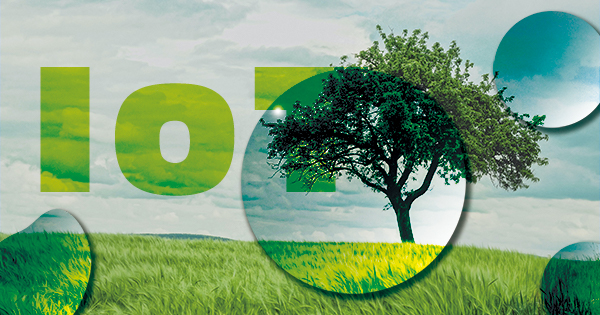
IoT helps devices, machines, and apps connect with each other, which requires high power consumption followed by waste and harmful emissions. We have to deal with the large-scale consumption of energy resources by IoT and the earlier we tackle this problem, the more efficient will be the IoT.
Green IoT foreshadows an exciting future in which green networks intimately integrate our physical environment. Green networks in IoT with sustainable designs are guaranteed to reduce operating costs and energy consumption and reduce environmental pollution. IoT will have a significant influence on how we approach certain challenges in our everyday lives, and it will undoubtedly make our lives easier and better.
Overview Green Internet of Things
Green IoT is an energy-efficient process (hardware or software). This means connected devices in an energy-efficient process for the purpose of reducing power consumption, the greenhouse effects, and minimizing the emission of CO2. By using green computational units, communication protocols, and network-based architectures with maximum utilization of bandwidth and relatively low energy utilization. The essential element of Green IoT is sustainable design and energy-efficient.
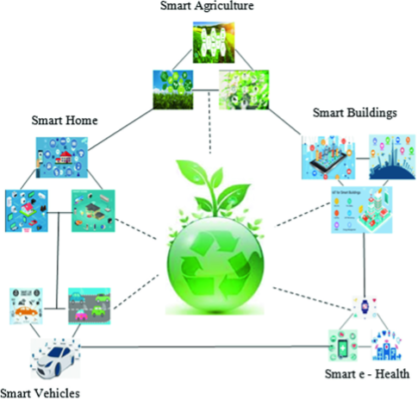
Figure 1: Green IoT (source: Application of IoT in Green Computing | SpringerLink (link.springer.com))
Green IoT has three concepts, namely, enabling technologies, leverage technologies, and design technologies. Design technologies refer to interconnections, network architectures, communications protocols, and the energy efficiency of devices.
To get a green IoT product, it must go through a closed process including green design, green production, green utilization, and green disposal/recycling.
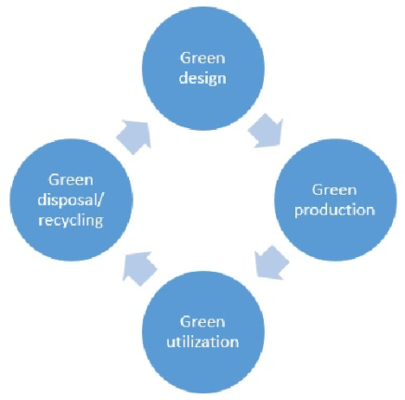 Figure 2: Life cycle of green IoT (source: Figure 6 from Green internet of things (IoT): An overview | Semantic Scholar (semanticscholar.org))
Figure 2: Life cycle of green IoT (source: Figure 6 from Green internet of things (IoT): An overview | Semantic Scholar (semanticscholar.org))
- Green design: designing cooling equipment, servers, computers, and energy-efficient components.
- Green production: producing computers, electronic components, and other associated subsystems.
- Green utilization: keeping computer and other information systems’ power usage to a minimum.
- Green disposal/recycling: computers and other electronic equipment that are no longer in use are recycled.
Potential of Green IoT
Green IoT encompasses a variety of technologies, including green cloud computing networks, green sensing networks, and green RFID tags.
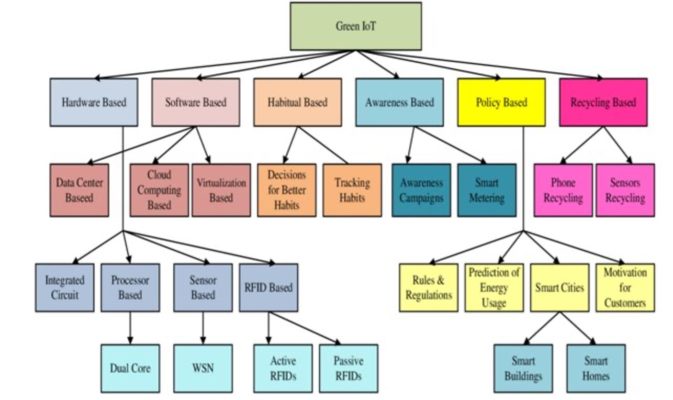
Figure 3: Classification of Green IoT technology (source: (PDF) Green IoT: An Investigation on Energy Saving Practices for 2020 and Beyond (researchgate.net))
- Hardware-based
- In an IoT network, the design of integrated circuits (IC) is critical for energy conservation. Green IoT enhances IoT network architecture by integrating sensors and processing power on a single chip to minimize total infrastructure energy consumption, carbon footprint, traffic, and e-waste.
- Processor-based with an energy-efficient processor that can be split into 2 cores. One core is for low-computing tasks, the other for high-computing tasks. Use the scheduling framework to assign tasks to reduce energy consumption.
- The development of wireless sensor networks (WSNs) is due to the combination of sensing and wireless communication. A WSN is made up of a large number of static sensor nodes with limited processing, power, and storage capacity that communicate through short-range radio connections. The sensor nodes include several onboard sensors that can collect data from the environment. The WSN applications benefit the environment by maximizing resource efficiency and lowering greenhouse gas emissions.
- RFID is one of the promising wireless systems of green IoT. RFID is made up of a number of RFID tags and a small number of RFID tag readers. An RFID tag is a tiny microchip connected to a radio (which can receive and send signals). RFID tags have a unique identifier and may store information about the items to which they are attached. By delivering a query signal, RFID readers start the information flow, and adjacent RFID tags react. RFID tags can be active or passive. The passive tags do not have inbuilt batteries and rely on the concept of induction to gather energy from the reader signal. Active tags, on the other hand, have a battery that powers the signal transmission and extends the range. RFID is used extensively in applications that assist in promoting a greener environment by improving trash disposal, reducing energy use in buildings, and lowering car emissions, among other things.
- Software-based
- Data centers can be critical to an energy-efficient IoT network, but they must be made more energy-efficient to be feasible for IoT. The Green Data Center (GDC) is a repository for data dissemination, data management, and data storage. This data is generated by things, systems, and users, etc. An architecture in which an Orchestration Agent (OA) is used in a Client-Server Model and is responsible for context evaluation of servers in terms of resource efficiency, as well as data center management. The processed data is then sent back to the client devices by the intelligently selected servers. However, this design necessitates the installation of OA on each client device, as well as the need for backup servers to maintain dependability, which may result in significant energy consumption. As a result, it must have a context-aware sensing platform that employs Selective Sensing to maximize energy efficiency.
- Cloud computing (CC) is an internet-based virtualization technique. It provides unlimited storage, unlimited computational, and service delivery via the internet. IoT is widespread and the use of CC technology is widespread for the purpose of connecting them. GCC’s main goal is to encourage the adoption of environmentally friendly items that can be easily recycled and reused. It can be accomplished by paperless virtualization, appropriate power management, and resource allocation for product lifetime. In Cloud Computing, centrally controlled data replication is required to offer consumers a high level of service and dependability, but it consumes a lot of energy and bandwidth. A solution is needed to decrease communication latency, which may be done by duplicating data closer to the users on cloud services.
- Virtualization can cut down on the number of hardware resources used in architecture, lowering energy usage. A four-layer virtualization system based on Mixed Integer Linear Programming (MILP), with IoT devices in the higher levels and networking elements in the bottom tiers. As a result, energy consumption is significantly reduced compared to the old model.
- Habitual based
This is a measure applied on a small scale. However, if the whole world were to change in this way, it would create a huge scale. This is done when we change basic habits in our daily lives to reduce CO2 emissions. It could be at home, the company office, etc.
- Awareness based
- Campaigns to raise awareness are an important part of lowering energy use.
- Smart Metering Technology can be used to provide homeowners with real-time feedback on their energy consumption from various sources of their buildings, offices, and homes. Then, based on that real-time data, green IoT can advise customers on how to regulate and decrease their energy use.
- Policy-based
Policies based on real-time data from IoT devices can contribute to large-scale energy savings. There are several phases to developing rules for energy efficiency, including automation, user feedback, data management, and monitoring.
2.6. Recycling based
The use of recyclable materials in the manufacture of devices in an IoT network can contribute to the network’s environmental friendliness. Mobile phones are produced from some precious natural resources, including non-biodegradable materials, plastic and copper, and can contribute to the greenhouse effect if not properly disposed of after use.
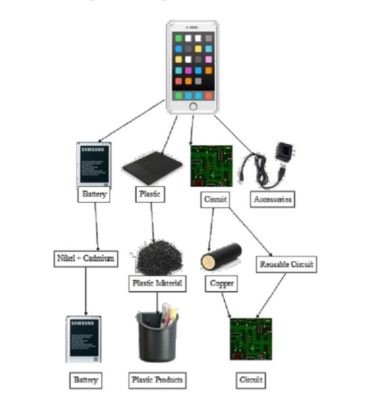
Figure 4: Mobile phone recycling process (source: (PDF) Green IoT: An Investigation on Energy Saving Practices for 2020 and Beyond (researchgate.net))
Real-life examples of Green IoT
-
- Smart Grid
The smart grid is a communication network that collects data from many electrical system sensors to help control energy sources and consumer consumption. It refers to the grid’s capacity to dynamically adjust and re-adjust dynamically in order to supply electricity at the best possible quality and price. This helps to coordinate the amount of energy consumed to ensure the safety and security of the power network. The Smart grid uses many renewable energy sources, including thermal power plants, solar power, wind power plant, and nuclear power plant.
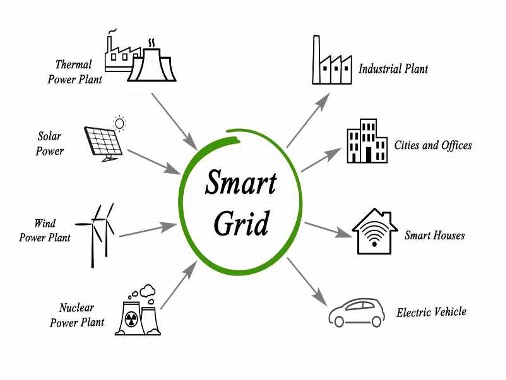
Figure 5: Smart grid (source: Getting ready to operate the smarter grid | Smart Energy International (smart-energy.com))
- Smart Cities
IoT may be defined as the effective use of energy to allow a smart world that is sustainable. To turn big cities into sustainable living places, equipping them with green IoT devices is a promising solution. This will bring benefits such as efficient use of energy, reduced CO2 emissions, increased security, useful solutions to help people. The following are the components that make up a smart city:
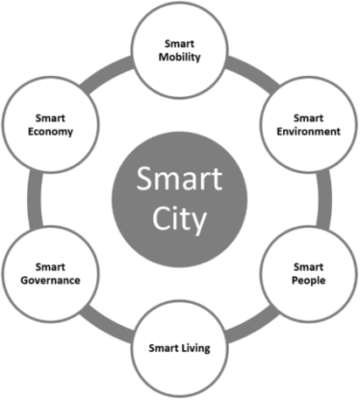
Figure 6: Smart city (source: A gamification framework for getting residents closer to public institutions | Request PDF (researchgate.net))
- Waste management: the Green IoT-based waste management system collects data from many sensors and then transfers them to a common data center, where the data will be analyzed with the aim of optimizing the collected waste.
- Intelligent transportation system: building smart roads with green IoT devices will give suggestions on the most suitable route when there are obstacles ahead, weather reasons or traffic accidents, traffic jams.
- Safe city: this is a combination of public announcement systems, fire control management, and digital video monitoring.
- Smart building: efforts focus on lowering energy usage by redefining building functions including lighting, heating, and air conditioning.
- Smart street lights: this involves controlling the transformers to adjust the lighting level appropriately at night or during the day with changing weather conditions.
- Smart parking uses a real-time vehicle tracking system to make suggestions for the nearest available parking in the city.
- Smart Manufacturing and Smart Factories
An era with a system that integrates real-world manufacturing development and virtual projects in cyberspace with the rise of the Internet of Manufacturing Things (IoMT). Machines will operate automatically with little or no human intervention. Good examples of this are smart manufacturing, smart factory, and The Industrial Internet of Things (IIoT).
Smart Industrial Plants and Machine to Machine Communications:
- Firstly, attach RFID tags to the production products.
- Secondly, when the RFID scanner scans the tag, it triggers the relevant event.
- Finally, as a result, an M2M situation emerges, in which the RFID reader interacts directly with the robot without the need for human interaction. At the same time, a WSN may monitor a machine’s vibrations to check its health and can trigger an event if the vibrations exceed a certain level. When the robot receives an emergency shutdown event, it instantly ceases to work.
- This saves energy by delivering real-time event data and ensuring that machines are not running needlessly. Furthermore, the increased focus on green M2M communications should help to minimize the amount of energy used by M2M subsystems.
- Intelligent transportation system (ITS)
ITS provides overseeing traffic and gives improved interfaces to transport administrations with the benefit of effectively overseeing traffic, keeping freight on time, and giving customers real-time access to view current location and predict arrival time to a specific location determined via RFID, NFC, and sensors. The devices also help collect information related to transportation products to help businesses respond quickly to market changes. Businesses that are effectively applying this technology, such as Walmart and Metro. Increased use of green transportation options can also help to reduce the need for expensive infrastructure usage investments and unpopular traffic restrictions.
- Smart Healthcare
A data center that allows sharing of patient medical records between hospitals. IoT devices used by patients will continuously check heart rate, blood pressure, body temperature, etc to send information to the data center when the patient is anywhere. Through the analysis process, it will send a warning about the current health status of the patient to the medical staff taking care of and will send medical rules to the patient. Some green IoT applications in smart health are as follows:
- Physical activity monitoring for the elderly: using body sensors to track activities, using GPS to help track current location for elderly people with memory-related health conditions
- Sleep control: with sensors designed for beds, they help monitor mattress stresses, sleep movements, heart rate, and breathing patterns. It applies smart data collection methods to ensure patient privacy preservation.
- Patient’s surveillance: with medical rules integrated into IoT devices such as sensors or biometrics, will help monitor and monitor patients (outpatients, inpatients, or chronic diseases such as heart, lung, blood) or medical devices to avoid potentially dangerous situations (such as wrong dose, wrong medication, etc) or for newborn identification purposes (to avoid bias). With the desire to improve the quality of care, reduce costs and improve service access.
- Smart sports: Real-time statistics of a player in sports are essential for coaches to make plans for the future, and will have proper nutrition.
- Smart agriculture
Green IoT will assist the agriculture industry in solving major issues such as climate change leading to water shortages, limited land availability, and managing the cost. The combination of IoT and CC reduces power consumption. Green IoT and green nanotechnology appear as satisfactory solutions to create smart and sustainable agriculture and food industry.
Smart agriculture involves applying the right amount of inputs (fertilizer, pesticides, and water), monitoring environmental impacts, and completing pre-and post-harvest operations. Various efficient approaches, such as smart insect detection, smart underground sensors, and irrigation systems, have been designed to perform tasks for smart agriculture.
Future of Green IoT
In the future, with the combination of sensors, IoT devices along with the connection to 5G networks and the strong support of AI, this will provide users with green solutions. This means that IoT devices will also be context-aware and be able to perform certain functions, suggesting green forms of communication between people and things and between themselves. The improvement in power in the design phase will make Green IoT popular soon. In fact, IoT devices should sleep when not in use and use routing algorithms during data exchange.
Currently, the areas that Green IoT focuses on include Green RFID Technology, Green Wireless Sensor Network Technology, Green Cloud Computing Technology, Green Machine to Machine Technology, Green Data Center Technology, Green Communication, and Networking, Green Internet Technologies. In the future, the potential of Green IoT will grow if the following improvements are made:
- More research is needed on IoT application products to reduce CO2 emissions and save energy.
- The radiofrequency energy collection should be considered in order to establish energy balance for facilitating green connectivity between IoT devices.
- In order to make green IoT devices popular, it is necessary to minimize the energy used by the devices, while finding new and alternative resources.
- Finding the right technology techniques to enhance QoS parameters (bandwidth, throughput, and delay) will contribute efficiently and effectively to greening IoT.
- M2M communication is crucial for reducing energy use. To allow automated processes, smart machines must get smarter. In the event that quick action is required, machine automation delays must be minimized.
- It would be more beneficial if data from the sensor could be sent to a mobile cloud. The wireless sensor network and mobile cloud are combined in Sensor-cloud. It’s a trendy technology with a lot of potential for green IoT. The energy efficiency of the system, service, WSN, and cloud administration may be investigated by a green social network as a service (SNaaS).
- In the future, UAVs will replace a large number of IoT devices, which reduces power consumption and environmental pollution. UAVs are a potential technology that will lead to low-cost, high-efficiency green IoT.
- For IoT devices and apps, ease of installation and usage by end-users are major technical concerns.
- Sensors’ constant detection frequently causes them to rapidly deplete their energy. Various sleeping strategies have been offered in the past to save energy. Inferring from past data can lead to significant energy savings for sensors and is worth future research.
- Data and context-awareness. Collecting data without context is unnecessarily consuming a lot of resources. One of the toughest challenges in the future will be preserving data context so that future data processing makes more sense.
- Interference-free connectivity. The growing number of IoT devices on the market will result in more competition for available spectrum, as well as higher interference. Future IoT devices must be built to be able to function in interference-prone areas while also being able to efficiently reduce interference from other IoT devices with low resource usage.
Conclusion
Green IoT in the future will make significant changes to lead to a green environment. Every day we will see sensors, machines, drones, etc communicating with each other to do a task intelligently for the green and sustainable environment. Green IoT not only helps other industries protect the environment and develop sustainably but also directly impacts the IoT industry. In the future, Green IoT will be a sustainable design and technology.
Source of references
- enabling-green-iot.pdf (pitt.edu)
- (PDF) Greening Internet of Things for Smart Everythings with A Green-Environment Life: A Survey and Future Prospects (researchgate.net)
- (PDF) Green IoT and Big Data (researchgate.net)
- (PDF) Green IoT: An Investigation on Energy Saving Practices for 2020 and Beyond (researchgate.net)
- (PDF) The Green Internet of Things (G-IoT) (researchgate.net)
